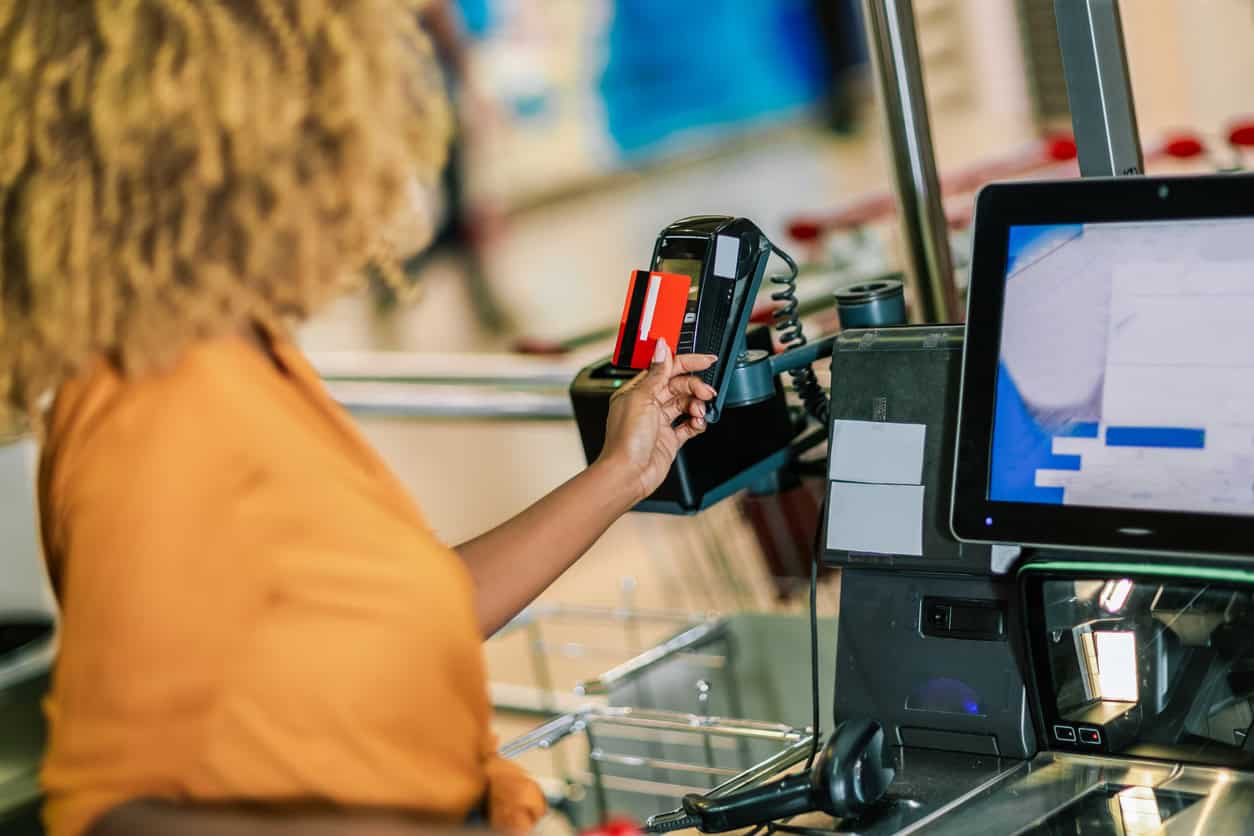
iStock.com/Jovanmandic
Should Self-Checkout Kiosks Be Regulated To Reduce Theft?
California bill SB 1446, introduced by Senator Smallwood-Cuevas, aims to regulate self-checkout systems in grocery and retail drug establishments. If passed, the bill would impose conditions on self-service checkout, such as limiting the number of stations per employee and ensuring the availability of manned checkout counters. It also restricts the use of self-checkout for certain items and requires businesses to assess the impact of such technology on jobs.
The bill emphasizes job preservation, requiring retailers to engage with employees before implementing self-checkout systems. Supported by the United Food and Commercial Workers (UFCW) union, the proposal is under consideration by California lawmakers, with a focus on balancing technological innovation with job protection and worker safety.
Supporters of the bill argue that it would help curb theft and create jobs. However, opponents, such as the California Retailers Association, view the proposed regulations as unnecessary and potentially burdensome for retailers.
“These measures will only serve to frustrate consumers with no evidence that they will reduce theft or provide additional protection to employees,” Margaret Gladstein from the California Retailers Association said at a hearing in April.
While proponents anticipate cost savings for companies, some experts speculate that retailers may opt to remove self-checkout machines altogether rather than invest in additional labor. This move could potentially lead to higher prices for consumers as companies seek to offset increased labor costs.
Retailers like Walmart, Target, and Home Depot have already endorsed a different proposed California ballot initiative to toughen penalties for repeat retail theft. The initiative, supported by these companies, responds to concerns highlighted in a 2022 ECR Retail Loss Group survey, where self-checkout systems were found to contribute up to 23% of total store losses, with two-thirds of surveyed retailers expressing escalating worries.
Several retailers have already begun scaling back their use of self-checkout systems to improve customer service and reduce losses. Companies like Walmart are experimenting with self-checkout, reserving lanes for specific customers like Walmart+ subscribers and delivery drivers. This approach aims to enhance efficiency and address concerns such as theft and slow queues.
While some stores are limiting self-checkout transactions or removing them altogether, others are enforcing item caps or designated time slots. This shift reflects broader changes in the retail landscape, prompting consumers to reconsider their shopping habits and retailers to balance automation with customer experience and security.
A Walmart in Shrewsbury, Missouri, is swapping self-checkout kiosks for traditional lanes as part of a wider store improvement initiative. The decision, driven by feedback and local needs, aims to enhance the shopping experience and personalize service. While this change is specific to one store, Walmart encourages innovation and customer-centric approaches across all locations. Meanwhile, other retailers like Target and Dollar General are also experimenting with self-checkout adjustments to streamline service.
A recent analysis conducted by Fit Small Business delved into the complexities of self-checkout technology, focusing on theft statistics and customer sentiments. The report highlighted the results from a LendingTree survey from November 2023, which found that while self-checkout offers convenience, it also poses risks, with 15% of users admitting to theft. Nonetheless, self-checkout remains popular among surveyed shoppers, with 96% of Americans having used it.
Despite concerns, retailers are still expanding self-checkout options because they offer “increased customer satisfaction, less overhead cost than manned checkout stations, and more time for employees to perform higher priority tasks,” according to Fit Small Business. Almost 50% of consumers are more likely to visit a store with self-checkout options, and the outlet revealed that self-checkout use is increasing. However, the majority of shoppers (54%) still prefer manned checkout options.
Even with its drawbacks, 83% of retail employees said they like self-checkout kiosks because they free them up to perform higher-priority tasks and better serve customers, according to Zebra’s 15th Annual Global Shopper Study.
Discussion Questions
Should government regulations, like California bill SB 1446, oversee self-checkout systems in retail establishments?
How can concerns highlighted by the ECR Retail Loss Group’s survey findings be effectively addressed while ensuring fair theft prevention measures?
Amidst the evolving landscape of self-checkout technology, how can retailers strategically transition to automated systems while maintaining positive shopping experiences and mitigating potential risks?
